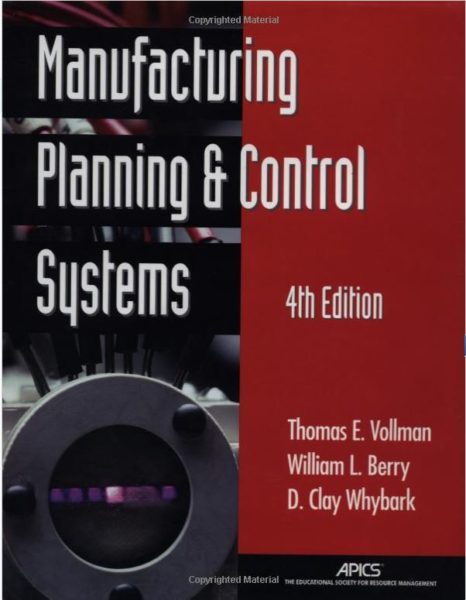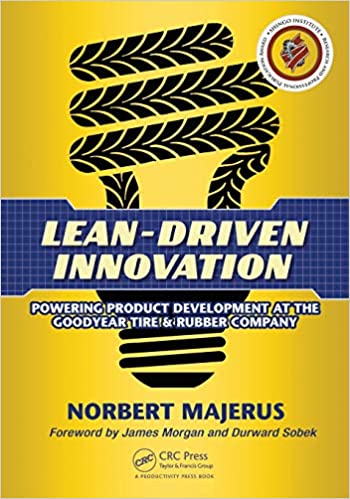Manufacturing Planning and Control for Supply Chain Management
Vollman, berry, whybark and jacobs', manufacturing planning & control systems, 5/e provides comprehensive real world based coverage of the concepts, tools, and methods used to manage and control manufacturing systems. This major revision contains four entirely new chapters and four thoroughly upgraded to nearly original content. Erp system coverage and the impact of them in the field is covered now in a new introductory chapter (4) as well as being integrated heavily into many other chapters from sales and operations planning (3) to advanced scheduling systems (16). Manufacturing planning & control systems, 5/e continues to be organized in a flexible format, with the basic coverage in chapters 1-12 followed by advanced chapters that could be covered along with the basics, or skipped. Each chapter provides a managerial issues overview, then the detailed technical presentation, then examples of company implementations, then concluding principles.
More info →Standardized Work with TWI: Eliminating Human Errors in Production and Service Processes
Training within Industry (TWI) program and describes how it can influence and alter one’s understanding of work standardization. Work standardization is the key to eliminating human errors from manufacturing and service processes. Work standardization is not just the creation of job instructions―it is a comprehensive approach in which employees are formally trained and their skills in the area of work improvement are developed by kaizen sessions. With poor instructions, though, the effectiveness of these two key activities in the work standardization process is practically impossible to achieve.
The book introduces you to 41 rules for standard work instruction (SWI) preparation. Following these rules will ensure that the instructions in your company are ideally suited to train operators and improve work. The author developed these rules based on his professional experience and practice within the TWI program in more than 120 manufacturing and service enterprises, while creating thousands of SWIs. These rules are a clear set of signposts that will help you develop a correct SWI on the first attempt without any unnecessary correction of errors. The quality of SWIs significantly affects how on-the-job training sessions are run, as well as how work analysis with respect to improvement is conducted.
More info →Lean-Driven Innovation: Powering Product Development at The Goodyear Tire & Rubber Company
In 2005, Goodyear’s research and development (R&D) engine was not performing up to its full potential. The R&D organization developed high-quality tires, but the projects were not always successful. Goodyear embarked on a major initiative to transform its innovation creation processes by learning, understanding, and applying lean product development principles. Within five years, Goodyear saw its product development cycle times slashed by 70 percent, on-time delivery performance rise close to 100 percent, and throughput improve three-fold – all achieved with no increase in the R&D budget.
Lean-Driven Innovation: Powering Product Development at The Goodyear Tire & Rubber Company describes in great detail how the Goodyear team was able to achieve such significant improvements. Revealing the ups and downs of this successful transformation, the book shares experiences of how this seismic change was managed, how people were engaged, and how Goodyear dramatically reinvigorated its product development and innovation processes―and, in the process, delivered substantial more value to customers and to the company.
The book also explains how lean product development helped Goodyear dramatically improve revenue by having every new product available when the market needed it. Presenting wide-ranging perspectives from all levels of leadership, this book is ideal for anyone in R&D daring to take on a lean initiative in R&D or who is struggling with a lean transformation that is not delivering to its full potential. Since the book focuses on universal lean principles, it is as insightful to other manufacturing and nonmanufacturing disciplines in any industry as well.
The book presents invaluable insights gained by the author during his 36 years within Goodyear, of which 10 have been directly involved in trying to develop, implement, and sustain lean to achieve the company’s business objectives. It distills ideas, practices, failures, and successes into key principles that lean product development practitioners can easily implement.
After reading this book, you will gain a practical path for applying lean to the innovation processes of your organization, including where to begin and what to do, regardless of the industry and the status of your transformation.
Watch Norbert Majerus discuss Lean-Driven Innovation at: https://youtu.be/yIlJEMJIcyA
More info →





